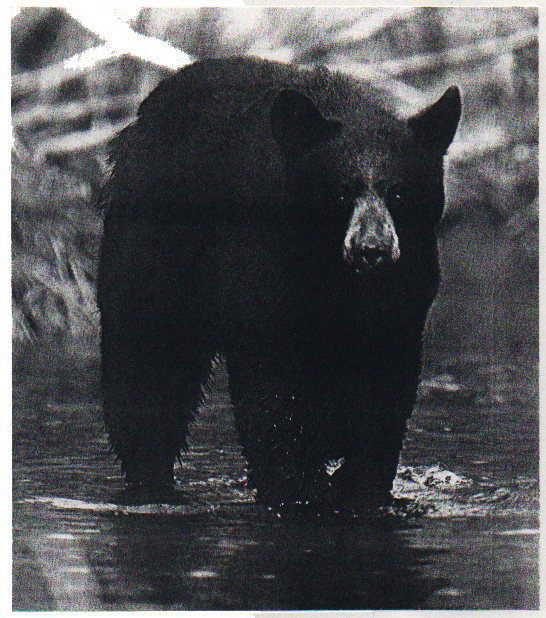 This collection of student work is from Frank Keim's classes. He wants to share these works for others to use as an example of culturally-based curriculum and documentation. These documents have been OCR-scanned and are available for educational use only.
This collection of student work is from Frank Keim's classes. He wants to share these works for others to use as an example of culturally-based curriculum and documentation. These documents have been OCR-scanned and are available for educational use only.Special | A | B | C | D | E | F | G | H | I | J | K | L | M | N | O
P | Q | R | S | T | U | V | W | X | Y | Z | ALL
Black Bears by Henry S. Hunter:
American Black bears are the most widespread and numerous bears in North America. They inhabit most of the continent's forested areas beginning at the northern tree limit of the Arctic, south throughout much of the United States and down the wooded Sierra Madre Mountains into northern Mexico. East and West they range from Newfoundland to British Columbia's Queen Charlotte Islands. Black bears are small bears compared to their cousins the Brown and Polar bear. They usually weigh no more than 300 pounds and are less than 5.5 feet long. They have long straight noses and the largest ears of all the bears. Trees are a Black bear's best friends. When ever they are in danger Black bears cl Black bears like to eat berries, leaves, and fish. They will steal fish from smoke houses when people are not around the camp or if they are sleeping. Sometimes you could see them eating berries on the tundra when it is time for them to fatten up for winter. Black bears have only two babies during the winter. They grow up in their cave till After leaving the den in spring, the mother bear will teach the cubs to run away from danger and how to hunt for fish in the rivers. She will also teach them how to eat good food like fish, roots, black berries, blue berries and salmon berries. The mother will keep the cubs till they are about 2 years of age. Then the mother will kick them out of their lives. Then they will have to learn how to live on their own. That will be hard to do because they are still young. But they will have to learn how to live alone and be smart so they can tell what is dangerous and what is not. Even so some of them will be shot the first year they are alone. Although Black bears are smart animals their young are curious and dumb. Sometimes they go to your tent and eat your food or bother you in the night when you are sleeping. This is when they get into trouble and may be shot and killed. The present status of the Black bear is good. The population is way up right now. But I think it will go down because there are a lot of hunters in the world. Like me, I will still hunt them for their meat.
Henry S. Hunter | ||||
|






